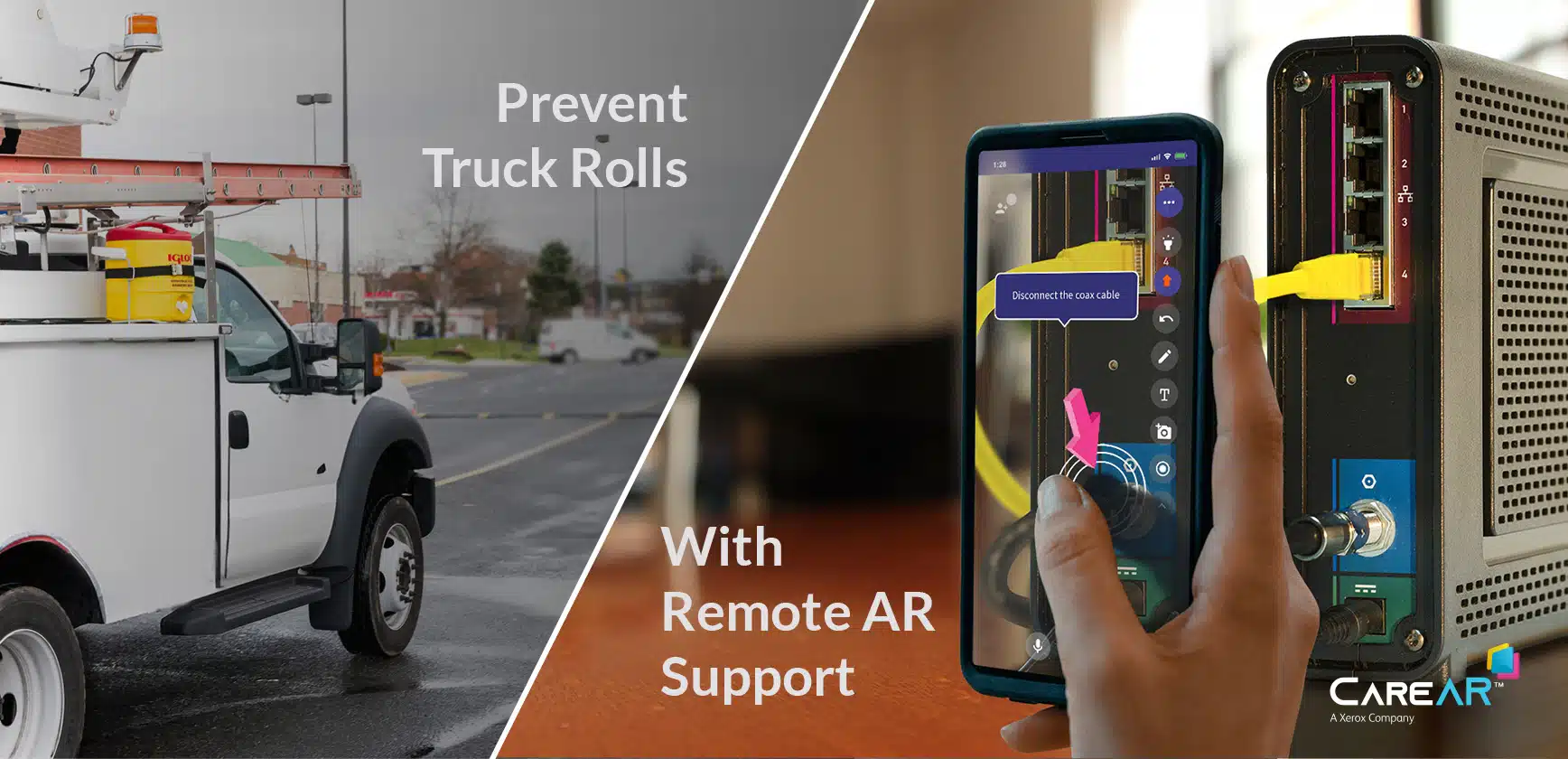Consider this scenario: a field technician is dispatched to a customer’s location, only to discover that the problem could have been resolved with a basic software update. This results in wasted time, fuel consumption, and increased frustration for the customer. This common situation, referred to as a “truck roll,” poses a significant financial burden for businesses in various industries. However, what if there was a solution to prevent these unnecessary trips from occurring in the first place?
Introducing remote AR video assistance, a revolutionary advancement in field service. This cutting-edge technology harnesses the capabilities of augmented reality (AR) to seamlessly connect field technicians with remote experts in real time, directly through their smartphones or smart glasses. By utilizing this innovative tool, technicians can receive expert guidance and support from specialists elsewhere, eliminating unnecessary on-site visits. This saves time and resources and enhances customer satisfaction by swiftly resolving issues without any physical presence. Remote AR video assistance can revolutionize the field service industry, streamlining operations and reducing costs for businesses while improving efficiency and customer experience.
How remote AR video assistance works:
- A technician can start a video call with a remote expert when facing a problem.
- Equipped with augmented reality tools, the expert can superimpose digital data onto the live camera feed of the technician. This may consist of diagrams, detailed instructions, or even three-dimensional representations of the equipment.
- The expert can guide the technician, assisting them in troubleshooting or conducting repairs while simultaneously observing the exact visuals the technician sees.
The advantages of remote AR video assistance.
Reduced truck rolls
AR video assistance has the potential to significantly reduce the number of truck rolls, resulting in a 50% decrease. This reduction in truck rolls leads to substantial cost savings in fuel, labor, and vehicle maintenance and enhances overall efficiency and productivity. By leveraging AR technology, businesses can optimize their operations and streamline their processes, benefiting their bottom line.
Faster problem resolution times
By providing technicians with instant access to expert guidance, problem resolution times can be significantly accelerated. This enhances customer satisfaction and minimizes downtime, resulting in a more efficient and effective problem-solving process.
Improved first-time fix rates (FTFX)
With AR’s visual guidance, the potential for misdiagnosis is significantly reduced, ensuring that repairs are completed accurately on the first try.
Enhanced training and knowledge sharing
New technicians can receive real-time mentoring and training from remote experts, which enhances their overall skill levels and knowledge base.
Who can benefit from remote AR video assistance?
The remote AR video assistance technology is a game-changer for various industries, providing significant advantages to:
Manufacturing:
Skilled technicians can remotely troubleshoot intricate machinery, identify issues, and perform proactive maintenance.
Field Service Management:
AR technology can guide on-site repairs, installations, and configurations, assisting professionals ranging from HVAC technicians to IT specialists.
Utilities:
Remote infrastructure inspections, diagnosing equipment failures, and even performing minor repairs can be done remotely, resulting in time and resource savings.
Getting started with remote AR video assistance.
Businesses can quickly get started with the help of numerous user-friendly AR video assistance platforms. Here are a few important considerations to consider:
- Choose the right platform. Consider features like ease of use, security, compatibility with existing devices, and integration with your workflow. We suggest considering CareAR® Assist.
- Train your technicians. Foster a sense of comfort and understanding within your team by ensuring they are at ease with the technology and fully comprehend the benefits it brings.
- Start small. Before implementing the technology on a large scale, it is advisable to first test it with a specific team or department to identify potential issues before a full-scale rollout.
The future of field service is remote.
Remote AR video assistance is more than just a fad; it is a game-changing technology completely transforming the field service industry. By fully embracing this innovative solution, businesses can cut costs, enhance productivity, and provide unparalleled customer service. So, say goodbye to traditional on-site visits and welcome the incredible power of remote AR video assistance. Your field technicians will be grateful; your financial results will reflect the positive impact.
CareAR can meet you on your journey to stop the truck roll. Learn more about remote AR video assistance.
